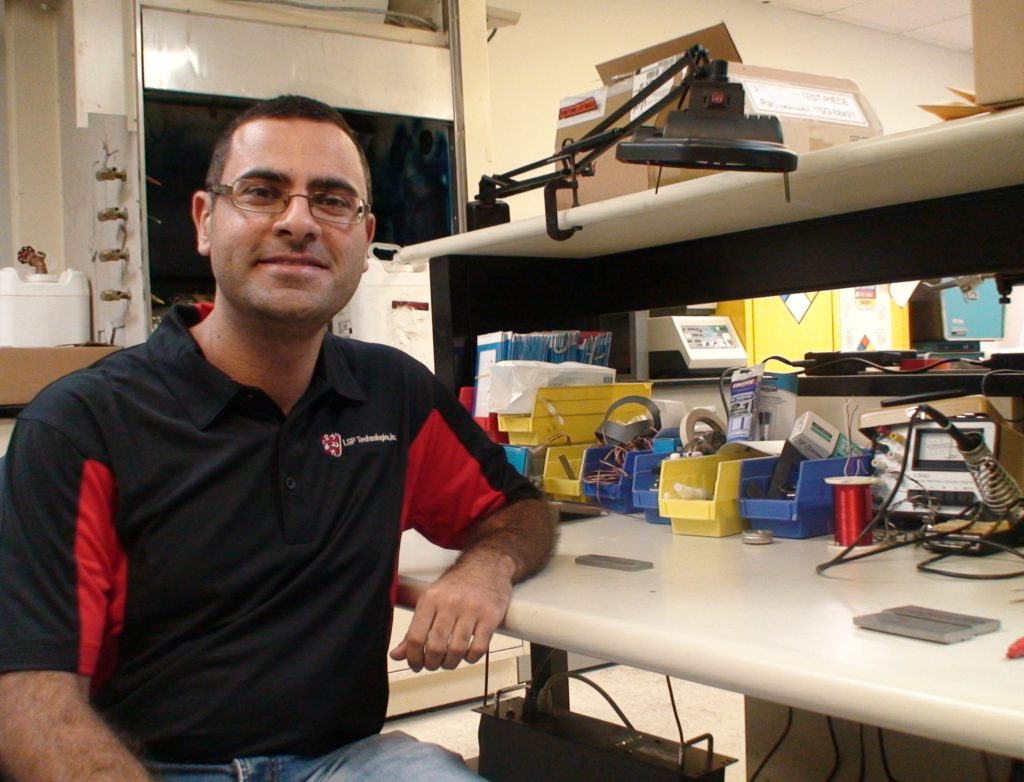Laser peening stabilizes parts at high temperatures
Testing at up to 1,200℉ shows laser peening promotes microstructural integrity and stability
Posted: July 19, 2018
By:

LSP Technologies, Inc.’s Micheal Kattoura presented findings on the stabilizing effects of laser peening for metal parts subject to high-temperature conditions at the 18th International Conference on the Strength of Metals (www.icsma18.org) July 16 at The Ohio State University’s Ohio Union.
Kattoura serves as a Materials Research Engineer for LSP Technologies (LSPT), providing expertise in both materials science and applied mechanics to quantify metal improvement benefits from LSPT’s laser peening systems in a variety of commercial applications.
“My research on this project underscored the benefits of the laser peening process for metal fatigue strength, even at elevated operational temperatures of 650℃ , or 1,200℉,” Kattoura said. “Metals we laser peened and tested at these elevated temperatures were able to retain a large amount of residual compressive stresses and stable microstructure created by the laser peening process.”
Laser peening uses a pulsed shock wave from high-energy lasers for metal improvement without damage to metal surfaces. Jet engines, electric power turbines, and other components operating at high levels of temperature and stress often use nickel-based alloys like those used in Kattoura’s research.
“Since 90% of mechanical components fail due to metal fatigue, our research on extending fatigue life and improving the performance of metal components continues to be crucial to stable and safe operations of mission-critical mechanical systems,” he said.
Testing Laser Peening vs. UNSM
Laser peening produced longer fatigue life for the nickel alloy compared to other competing technologies, including ultrasonic nanocrystal surface modification (UNSM), Kattoura found. “Moreover, laser peening is a non-contact metal enhancement strategy, never having a tool touching the surface. However, UNSM is a contact process, so it cannot reach all the surfaces of parts with complex geometry as well as laser peening can,” he said.
“We will continually need more work on improving metal enhancements at high temperatures, understanding microstructural changes and reinforcing stability to resist fatigue failure,” Kattoura said.
Kattoura performed much of this work while a researcher at the Ohio Center for Laser Shock Processing for Advanced Materials and Devices at the University of Cincinnati (UC). Kattoura holds a Ph.D. in Mechanical Engineering from UC with a research focus on materials engineering and surface treatments, an MS in Mechanical Engineering from the American University of Beirut, and a B.S. in Mechanical Engineering from Notre Dame University-Louize, Lebanon.
The full title of Kattoura’s presentation on the subject is, “The Effect of Advanced Mechanical Surface Treatments on Room and Elevated Temperature Residual Stress, Microstructure, Strength, and Fatigue Behavior of ATI 718Plus Nickel-Base Alloy.”
Contact LSP Technologies to learn more.
Interested in Seeing More?
Tell us about your application, material, or failure mechanism and we will have one of our experts reach out to you. Our extensive library of research and years of experience gives us a unique advantage to apply a finite element analysis to help diagnose the best application for your situation.
